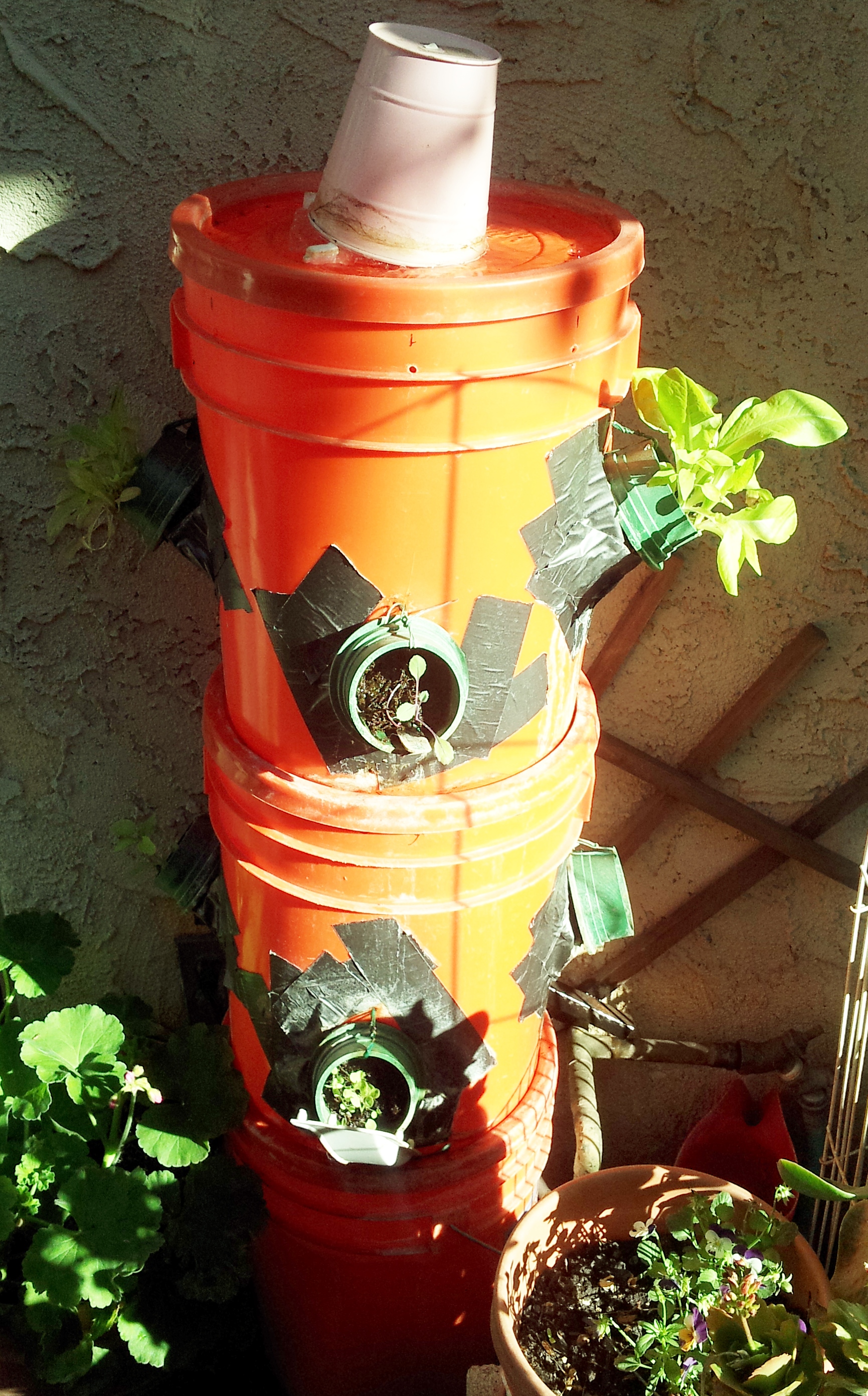 Click here for the official guidelines from the Boy Scouts of America for the Gardening Merit Badge.
Click here for the official guidelines from the Boy Scouts of America for the Gardening Merit Badge.
This badge clearly lends itself to our self-watering container gardens. The badge requires you to grow six vegetables, three from seeds and three from seedlings (plants already started by a nursery or some other gardener), then maintain them through harvest. Depending on the vegetables, you may be able to fit them into one or two self-watering bucket containers.
The badge similarly requires you to grow three flowers from seeds and three flowers from seedlings. As discussed on our Basics of Self-Watering Container Gardening page, having colorful blooming flowers in your garden – even non-food flowers – draws pollinators to your garden where they then find the blooms on your fruit and vegetable plants. Growing edible flowers can be a better bet, yet, adding interest, color, and nutrients to your salads and desserts while also drawing pollinators to your garden.
The badge requires you to test 100 seeds for germination and determine their germination rate. You can often get that many seeds in a single packet when the seeds are small like lettuce and tomatoes. Larger seeds like beans and squash can take several packages of store-bought seeds (which are likely not non-GMO). Some online vendors sell non-GMO seeds in larger bags, in which case getting 100 larger seeds for this project from a single bag of seeds is possible and is probably more cost-effective than buying many smaller packets.
This badge also requires you to identify common garden pests and name two possible solutions for each pest. At least two of the solutions you suggest must be organic. If you are suggesting any non-organic solutions, please also examine the ingredients and research the degree to which it is known if they have any adverse effects on the environment and, if so, what they are, and discuss your findings when you describe your solutions to your Badge Counselor.
Organic solutions to common pests can include dosing the soil with beneficial nematodes to eat the larvae of any pests that may be present; bringing in predatory insects to eat buggy pests; or spraying your plants with a mixture of water, garlic, onion, and cayenne run through a blender and strained through cheesecloth into a spray bottle plus a few drops of soap (not detergent), to name some. You can research many others.
One option to complete this badge is to build a composter. A composter takes green waste (vegetable cuttings, old fruit cores, etc.) and mixes it with brown waste (dried leaves, coconut coir, shredded paper, hay, etc.), then you wet and mix it around every few days until it all decomposes down into rich fertilizer for your garden.
Another option is to build a vermiposter. A vermiposter is much like a composter, only its full of earthworms and doesn’t require mixing. The worms do the mixing for you, plus the make worm castings (poop) that enriches their soil.
Yet another option is to build a hydroponic garden containing three vegetables, herbs, or ornamental plants. While our self-watering container garden activities do not include hydroponic gardening, as an experiment, KPS4Parents did, in fact, build its own hydroponic garden as a test for future possible gardening activities and it remains in operation, bearing mostly lettuce (see image below).
Presuming you pursue this option for the badge, what might your hydroponic garden look like? Research the commercially available hydroponic gardens and towers to see how they work and if you can replicate their functions in a design of your own.

Return to Boy Scouts Page
